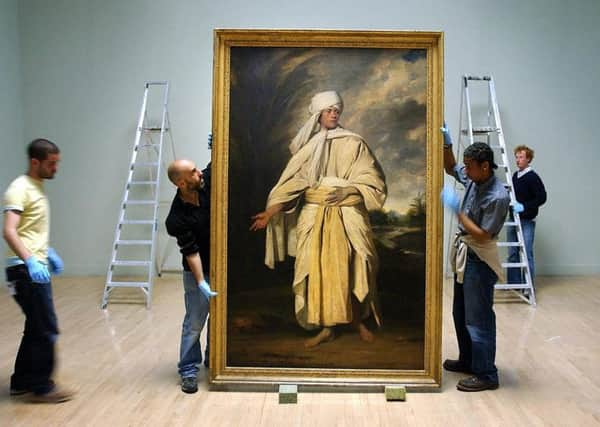Renowned portrait has brush with the taxman


Omai, by Sir Joshua Reynolds, was displayed at Castle Howard for more than 200 years before it was sold for £9.4m at auction in 2001, in part to fund the divorce of Simon Howard.
The tax authorities have been fighting ever since to prove that capital gains tax was payable on the hammer price.
Advertisement
Hide AdAdvertisement
Hide AdHer Majesty’s Revenue and Customs (HMRC) lost the debate last year when a judge ruled that, despite the enormous increase in the value of Sir Joshua’s work since the Earl of Carlisle bought it in 1796, it was “plant or machinery” and, therefore, tax free.
However, in a case with huge implications for owners of historic homes and art collectors alike, HMRC is now challenging that decision at the Court of Appeal, arguing that it defies common sense to describe the masterpiece as “a wasting asset”.
The portrait, depicting one of the first Pacific Islanders to visit Europe, was first exhibited at the Royal Academy in 1776 – the year of American independence.
It was part of the estate of politician, soldier and one-time chairman of the BBC’s board of governors, Sir George Howard, who died in 1984.
Advertisement
Hide AdAdvertisement
Hide AdThe executors of his estate, of whom Simon Howard is one, argued successfully that, as the painting was one of the main draws for visitors to Castle Howard, it should be viewed as “plant” used in the “trade or business” of attracting the public.
However, David Goy QC, for HMRC, yesterday told three Appeal Court judges: “No one would ordinarily describe such a painting as a wasting asset, used in a trade or business, or something which has a predictable life not exceeding 50 years.”
Describing Omai as “simply a family heirloom”, he said the painting had already been exempted from inheritance tax on Sir George’s death, on condition that it did not leave the UK and was kept on public view.
The painting had been lent by Sir George during his lifetime to the estate company that has owned Castle Howard, near Malton, since 1952 and that also meant his executors could not take advantage of the “wasting assets” exemption in the Taxation of Chargeable Gains Act 1992.
Advertisement
Hide AdAdvertisement
Hide AdRuling on the case last year, Mr Justice Morgan accepted the executors’ arguments that Omai was rightly viewed as a piece of apparatus that, at least in legal theory, became worthless 50 years after it was placed on public display in the 1950s.
The judge said: “I accept that there is something surprising in holding that an asset of high value, and one liable to appreciate in value, with a predicted life of more than 50 years, was a wasting asset.”
But he nevertheless ruled that the wording of the 1992 Act meant that the painting was deemed to be worthless when it went under the hammer at Sotheby’s and that not a penny in tax was payable on the sale price.
The executors of Sir George’s estate insist that, without Omai and other famous works on display, Castle Howard would have been unviable as a business proposition.
HMRC contends that although the painting was admired by visitors its sale did not lead to any falling off in visitor numbers, which have in fact grown by 10 per cent.
The appeal hearing continues.